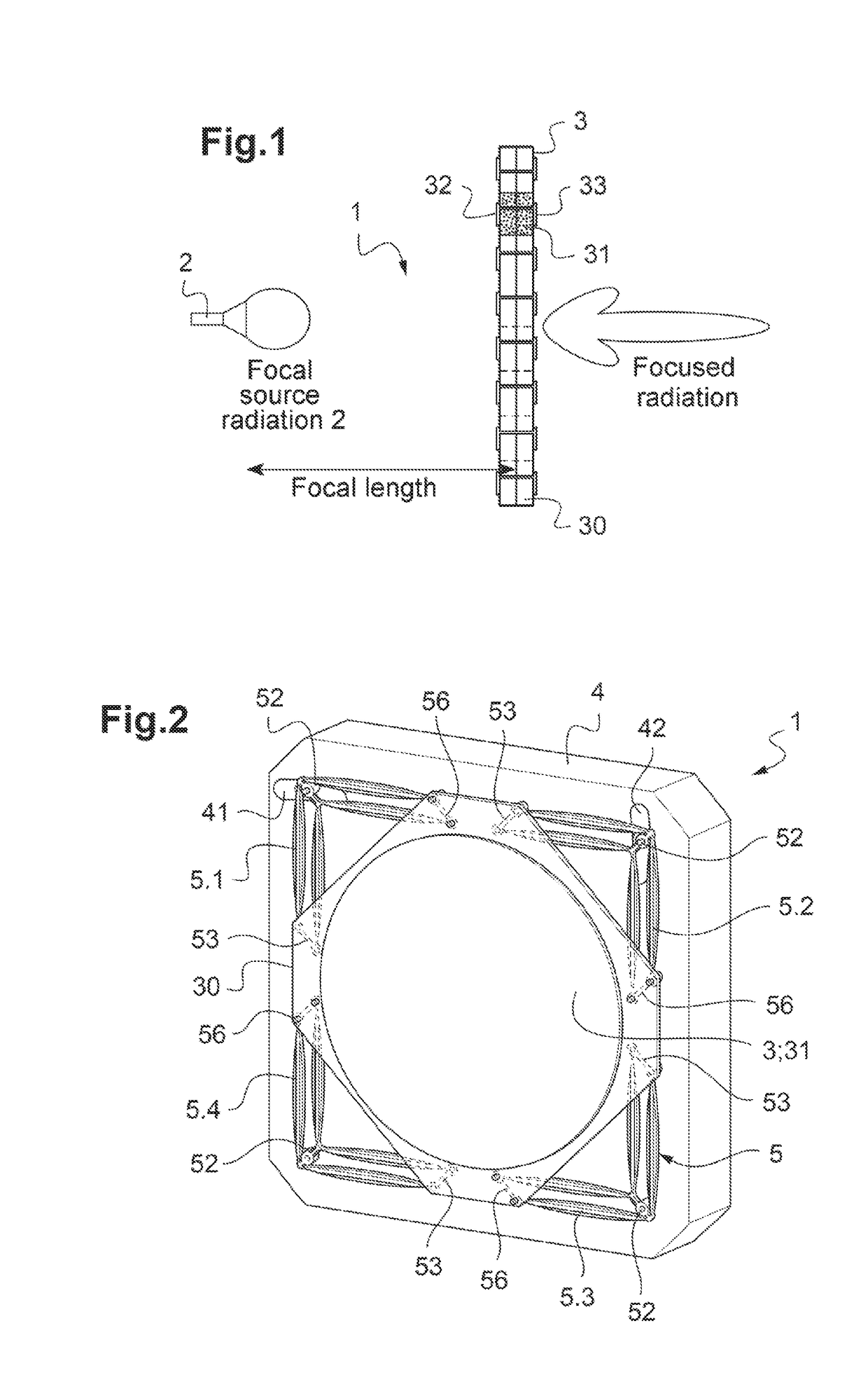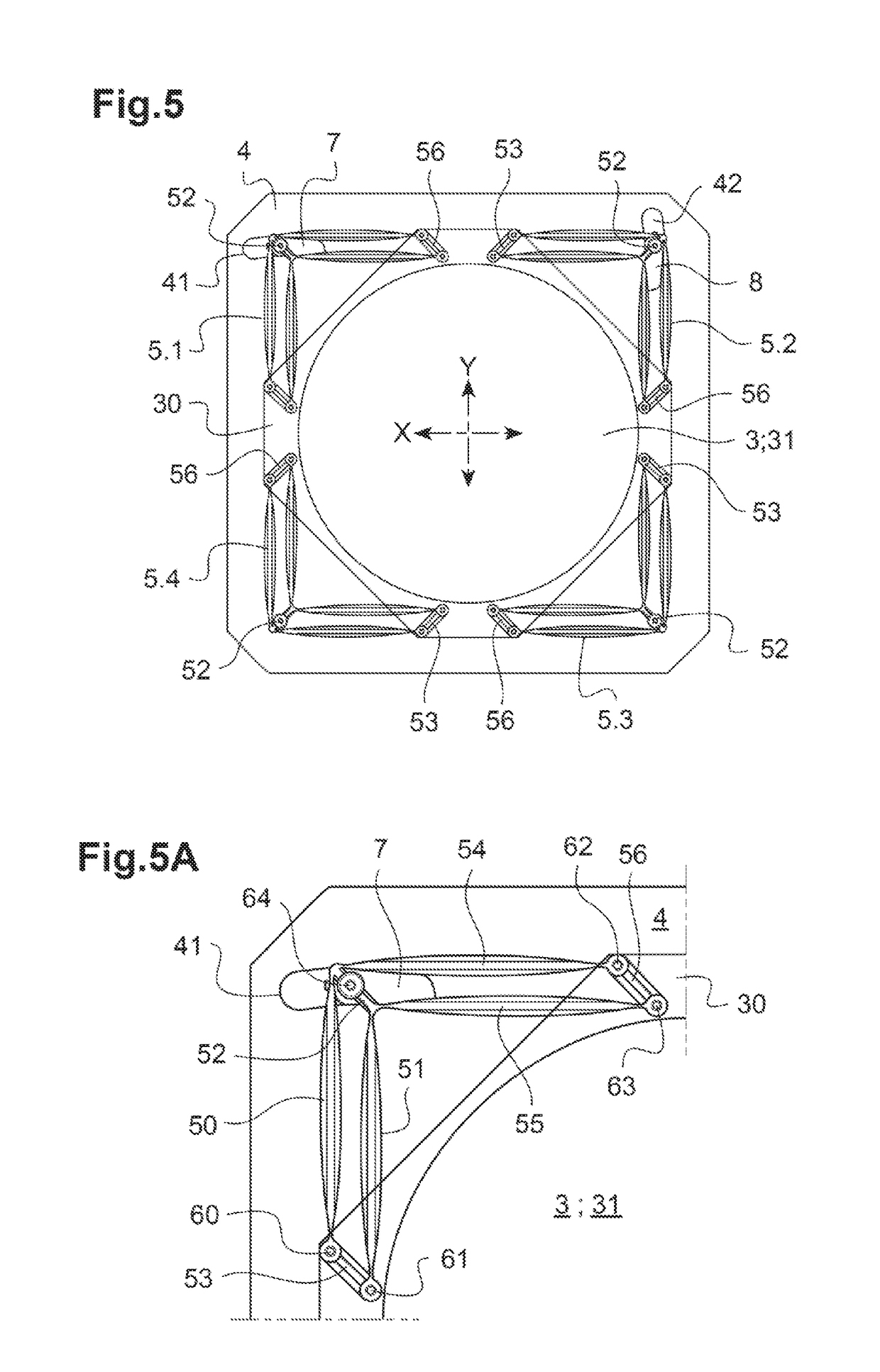Transmit-array antenna comprising a mechanism for reorienting the direction of the beam
a beam direction and beam technology, applied in the field of transmitarray antennas, can solve the problems of higher production cost, complex and more expensive high frequency implementation, and lower dynamic performance levels, and achieve the effects of increasing complexity, increasing production costs, and increasing complexity
- Summary
- Abstract
- Description
- Claims
- Application Information
AI Technical Summary
Benefits of technology
Problems solved by technology
Method used
Image
Examples
Embodiment Construction
[0084]Further advantages and features of the invention will become more clearly apparent upon reading the detailed description of embodiments of the invention, which is provided by way of a non-limiting example, with reference to the following figures, in which:
[0085]FIG. 1 is a schematic view of a reflector-array antenna according to the prior art;
[0086]FIG. 2 is a perspective view of a reflector-array antenna according to the invention provided with its four-pantograph mechanism for moving the transmit-array;
[0087]FIG. 3 is a side view of the antenna according to FIG. 2;
[0088]FIG. 4 is a perspective view of one of the pantograph devices of the mechanism for moving the reflector-array according to the invention;
[0089]FIG. 5 is a front view of the antenna according to FIG. 2;
[0090]FIG. 5A is a detailed view of FIG. 5 showing the connection of one of the pantograph devices to one of the servomotors for translationally moving the transmit-array in a direction;
[0091]FIG. 6 is a schemat...
PUM
 Login to View More
Login to View More Abstract
Description
Claims
Application Information
 Login to View More
Login to View More - R&D
- Intellectual Property
- Life Sciences
- Materials
- Tech Scout
- Unparalleled Data Quality
- Higher Quality Content
- 60% Fewer Hallucinations
Browse by: Latest US Patents, China's latest patents, Technical Efficacy Thesaurus, Application Domain, Technology Topic, Popular Technical Reports.
© 2025 PatSnap. All rights reserved.Legal|Privacy policy|Modern Slavery Act Transparency Statement|Sitemap|About US| Contact US: help@patsnap.com



